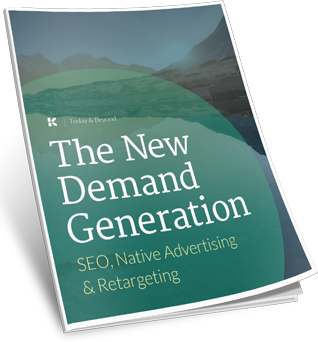
PPC Marketing Services
Since the rise of search engines more than two decades ago, pay-per-click (PPC) marketing has remained one of the most popular methods brands use to drive website traffic. With more than 3.5 billion Google searches happening each day, according to Internet Live Stats, search engines still provide the best opportunity for brands to connect with potential customers.
But while having a robust SEO strategy can drive significant traffic to your website, leveraging PPC advertising services can help your organization double down on lead generation and dominate even more real estate on search engine results pages (SERPs).
Whether you’re just getting started with your first PPC campaign or looking to improve your success, here are some useful tips and background to help you meet your goals.
What is PPC?
Pay-per-click, also known as paid search, is an internet marketing model that charges advertisers each time someone clicks one of their ads. Search engine ads are the most common form of PPC and give advertisers the opportunity to bid on ad placement in programmatic auctions. (Here’s how Google AdWords auctions work.)
Winning ads appear above organic results on SERPs. Clicking an ad will drive a user to your website, on whatever page you choose. Depending on the purpose of your campaign, you can send visitors to your homepage, product page or, preferably, a purpose-built landing page.
What Are the Benefits of PPC Marketing?
There are many benefits and drawbacks to PPC marketing.
Here are a few of the pros:
-
You can target exactly the audience you want. PPC advertising allows you to use demographic targeting to ensure you’re reaching the people most likely to convert, increasing brand visibility and providing trackable data.
-
It yields impressive returns. For every $1 businesses spend on Google Ads (previously AdWords), they earn $2 in revenue, according to data published by Forbes.
-
It brings in better qualified leads. PPC visitors are 50 percent more likely to make a purchase than are organic visitors, according to data from Unbounce.
And here are some of the cons:
-
People are still more likely to trust organic results over ads. While the margins are shrinking, according to data published by Moz, organic results still earn a majority of SERP clicks.
-
It can be expensive. Competitive keywords are pricey, and if you’re not carefully watching your analytics, those costly clicks could be wasted on people outside your target audience and unlikely to convert.
-
It can be challenging to get started. Even user-friendly platforms like Google Ads have a learning curve. But if you don’t learn the ins and outs of the program, you risk making costly mistakes.
Building a Keyword List
Your keyword list is the crux of your PPC strategy, so it’s critical you dedicate time and effort to keyword research. And because trends can change, it’s also important you do keyword research often to make sure you’re not missing opportunities to drive traffic to your site. Utilizing Bing Ads alongside Google Ads can further enhance your PPC strategy by increasing brand visibility and connecting with high-intent searchers across the web.
Here are three tips to keep in mind as you begin building and refining your keyword list:
-
Keep it relevant. Just because a keyword will drive traffic to your site doesn’t mean you should include it in your list. Paying for irrelevant keywords will attract visitors who are unlikely to convert, and that’s a surefire way to blow your budget and see little in return. Make sure the keywords you choose are highly relevant to the product or service you offer and used by people seeking the solution(s) you provide.
-
Make it comprehensive. Include all relevant keywords and variations of keywords frequently searched by your primary audience. And be sure to add long-tail keywords, which are not only more specific but also often much less expensive.
-
Create a negative keyword list. Another way to help eliminate wasted ad spend is to add negative keywords (irrelevant keywords you don’t want to be associated with your ads). By creating a list of negative keywords, you can ensure your ad will not be displayed when someone searches terms unlikely to result in a conversion. For example, if your website sells only sunglasses, you might include words like “bifocals,” “reading glasses,” “prescription” and “contact lenses” in your negative keyword list.
Driving PPC Lead Generation and Conversion
Some organizations create thorough keyword lists and still fail to see the results and return on ad spend (ROAS) they’d like to see from their PPC campaigns. Here are a few things you can do to help increase your conversion rate:
-
Identify a clear goal. Are you hoping to build brand awareness? Or are you looking to reach prospects who are further down the funnel and ready to buy? Before you begin building a campaign, determine what you’re hoping to accomplish. This objective will influence everything from the copy you use to the audience you target. Effective ad campaigns are crucial for achieving these goals and driving sales, revenue, and ROI.
-
Write irresistible ad copy. Composing ad copy that captivates prospects is an art form, and it takes practice and testing to get it right. But your ad copy is what earns clicks, and you can’t drive conversions without first driving clicks. (Here are a few tips on writing better Google ads.)
-
Create user-friendly landing pages. Creating great ads is only half the battle. Once a visitor arrives on your site, you need to make sure you’re providing an experience that drives further action. By creating custom landing pages tailored specifically to each of your PPC campaigns, you can ensure the messages align. Be sure the page is also clean, simple and includes a clear call to action.
-
Ensure the experience is optimized for mobile. The number of mobile phone searches has grown 55 percent since 2014, according to data from Statista. And more searches take place on mobile devices than desktops. If you’re not optimizing your ads and landing page experiences for mobile users, you’re neglecting more than half your audience.
-
Test, optimize, repeat. Always launch multiple variations of an ad and keep a close eye on the results. Over time, you’ll learn what works and what doesn’t, and be able to replicate your successes. The more you test and optimize your ads, the better your ads will perform and the higher your returns.
For more tips to maximize PPC success, check out these secrets from a Google Partner Agency.
Getting Started with PPC Management Services
When done well, pay-per-click marketing can help generate brand recognition, drive significant traffic to your site and increase revenue. But, like all marketing efforts, it takes time, effort and a little trial and error to reach the ROI “sweet spot.” It’s also not something you can set up and forget, because successful PPC requires constant oversight.
In other words, PPC campaign management is a full-time job and, depending on the size of your organization, may require an entire team. If you’re struggling to reach success through PPC efforts, you may want to consider working with a PPC management agency that has the experience and expertise to identify opportunities, conduct PPC audits, handle remarketing campaigns, and offer real-time management services to generate the best possible return on ad spend.
Determine your estimated management fee using the calculator below.
Ad Management Pricing Calculator
- © Kuno Creative - All Rights Reserved
- Privacy
- Terms & Conditions
- 3248 West Erie, Lorain, OH 44053
- 800.303.0806



